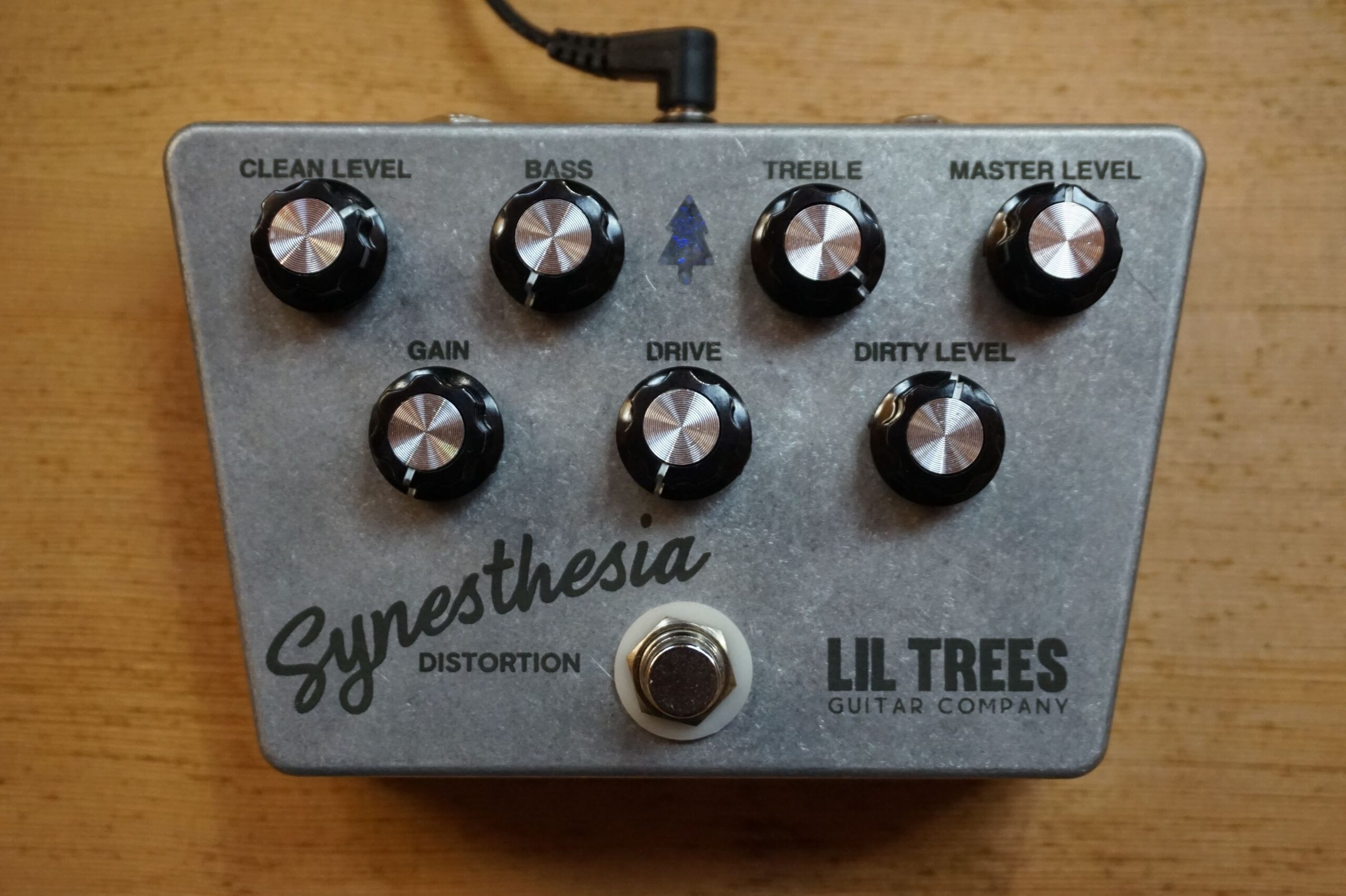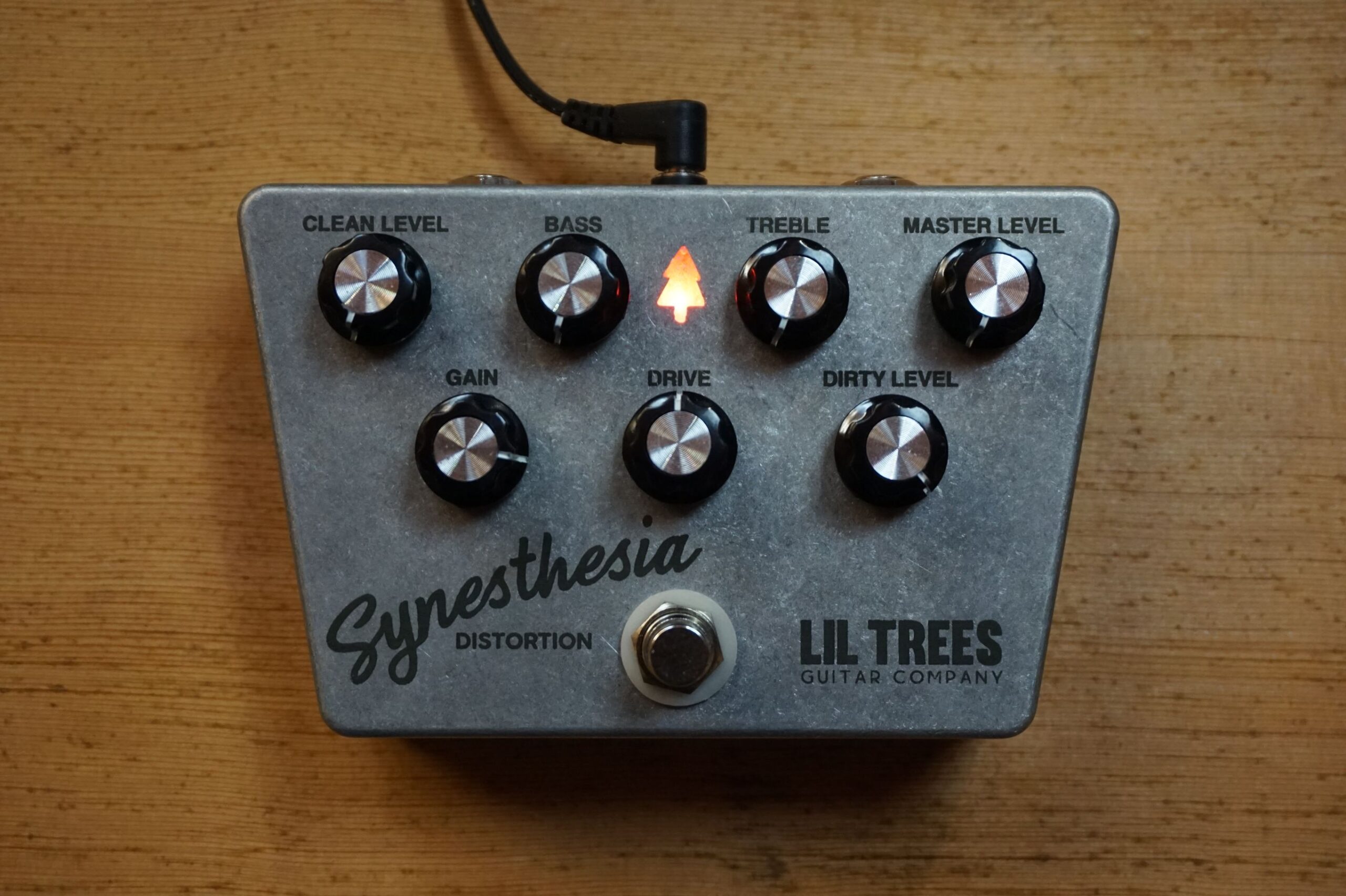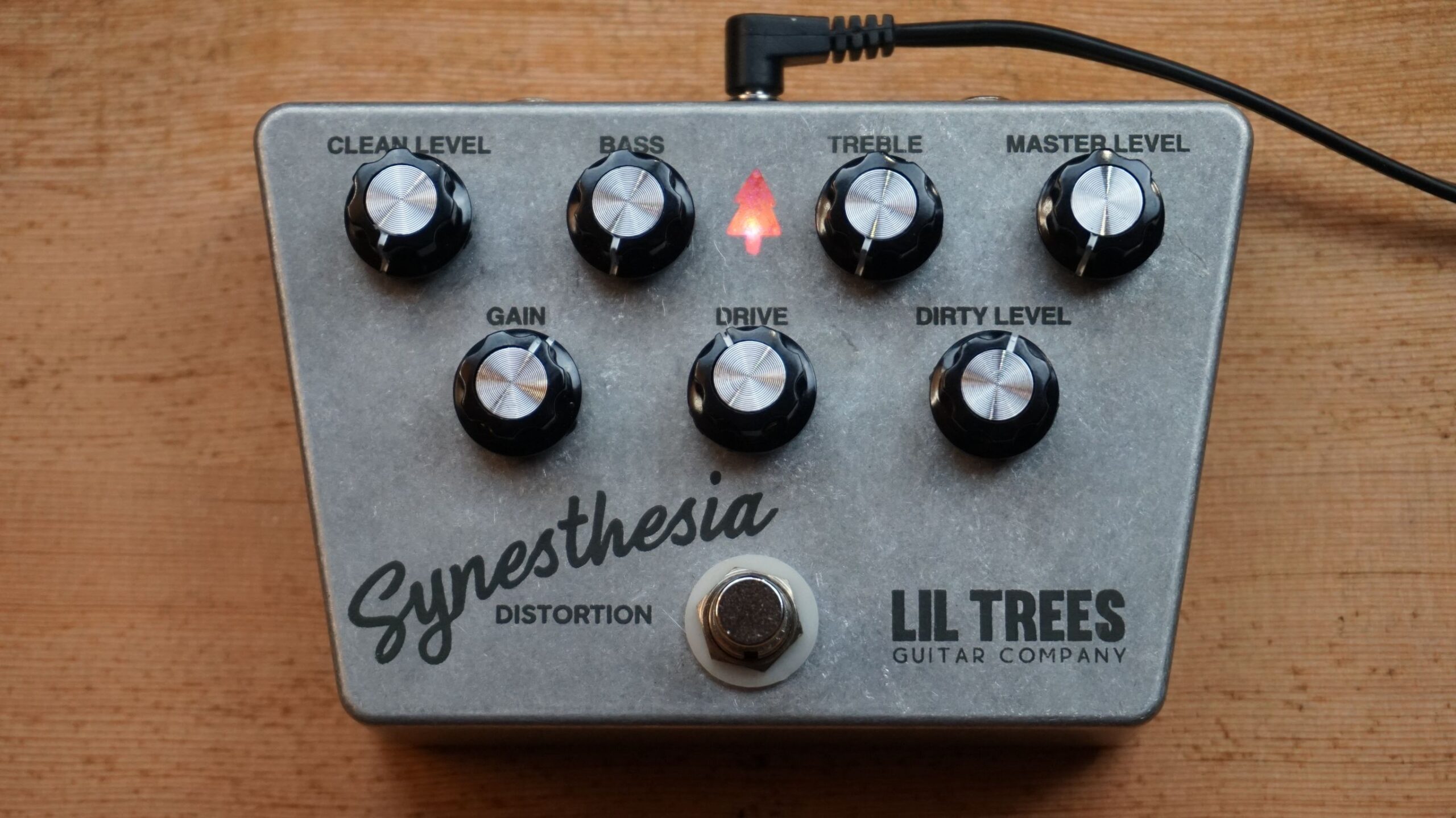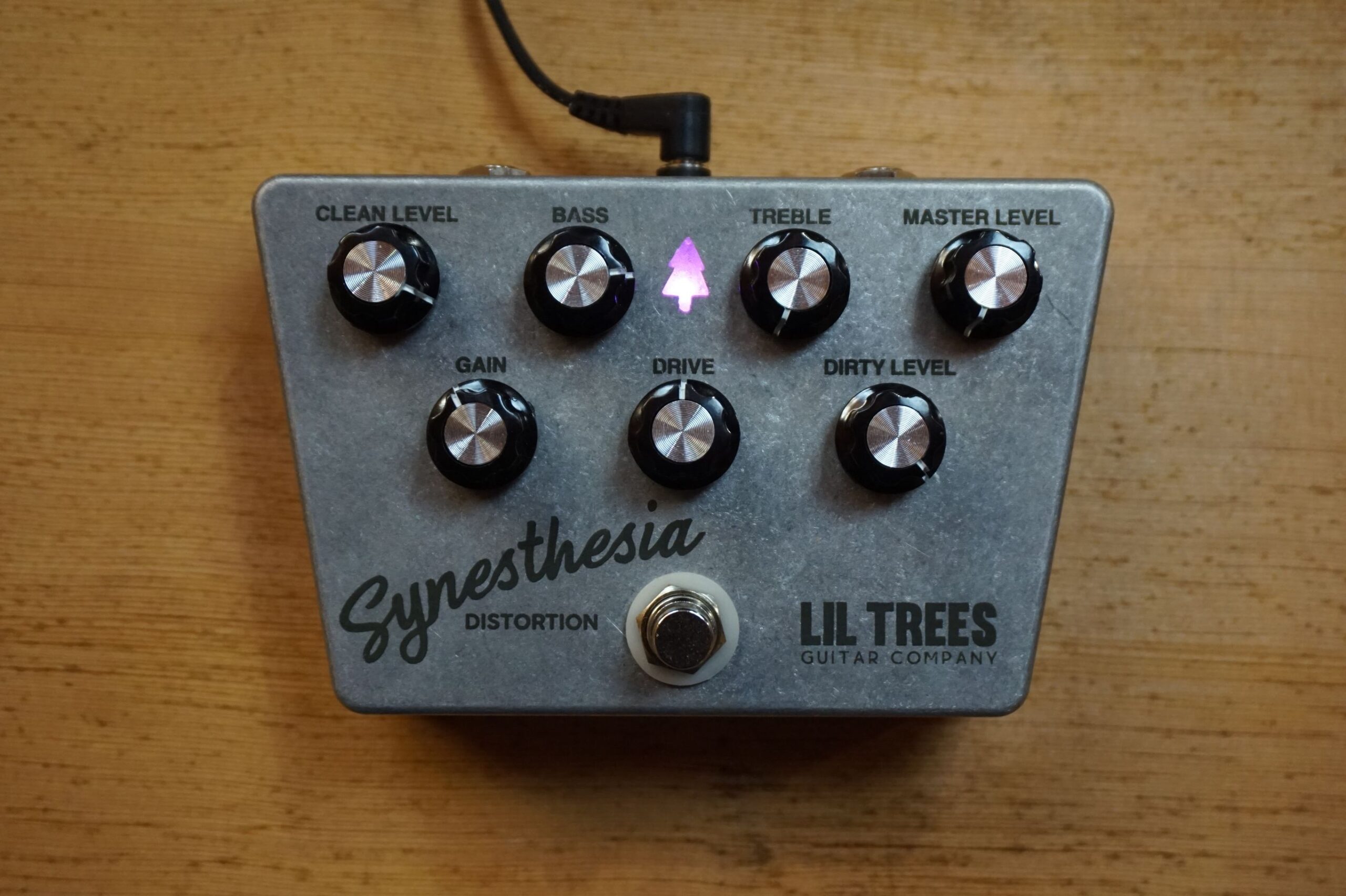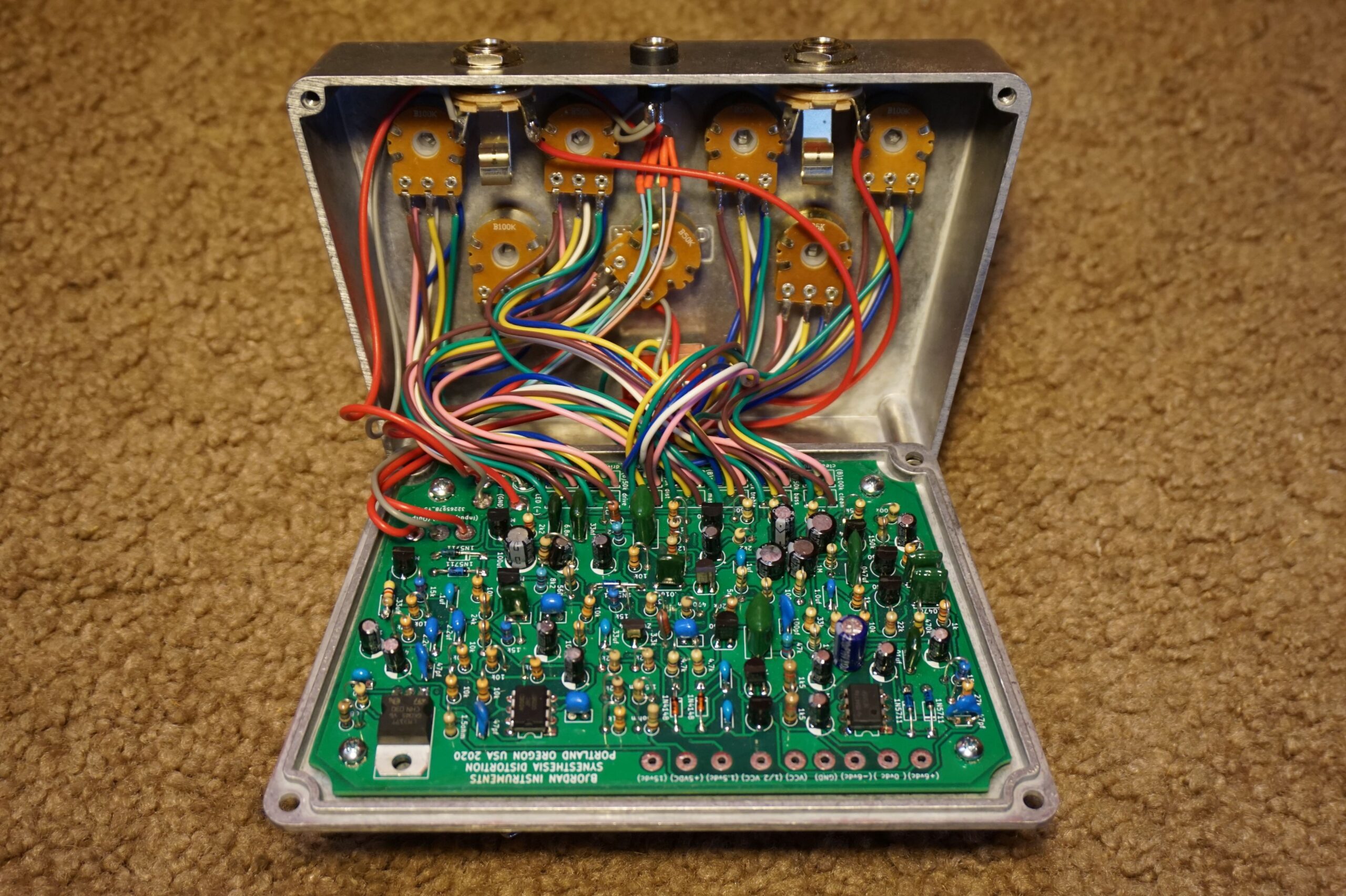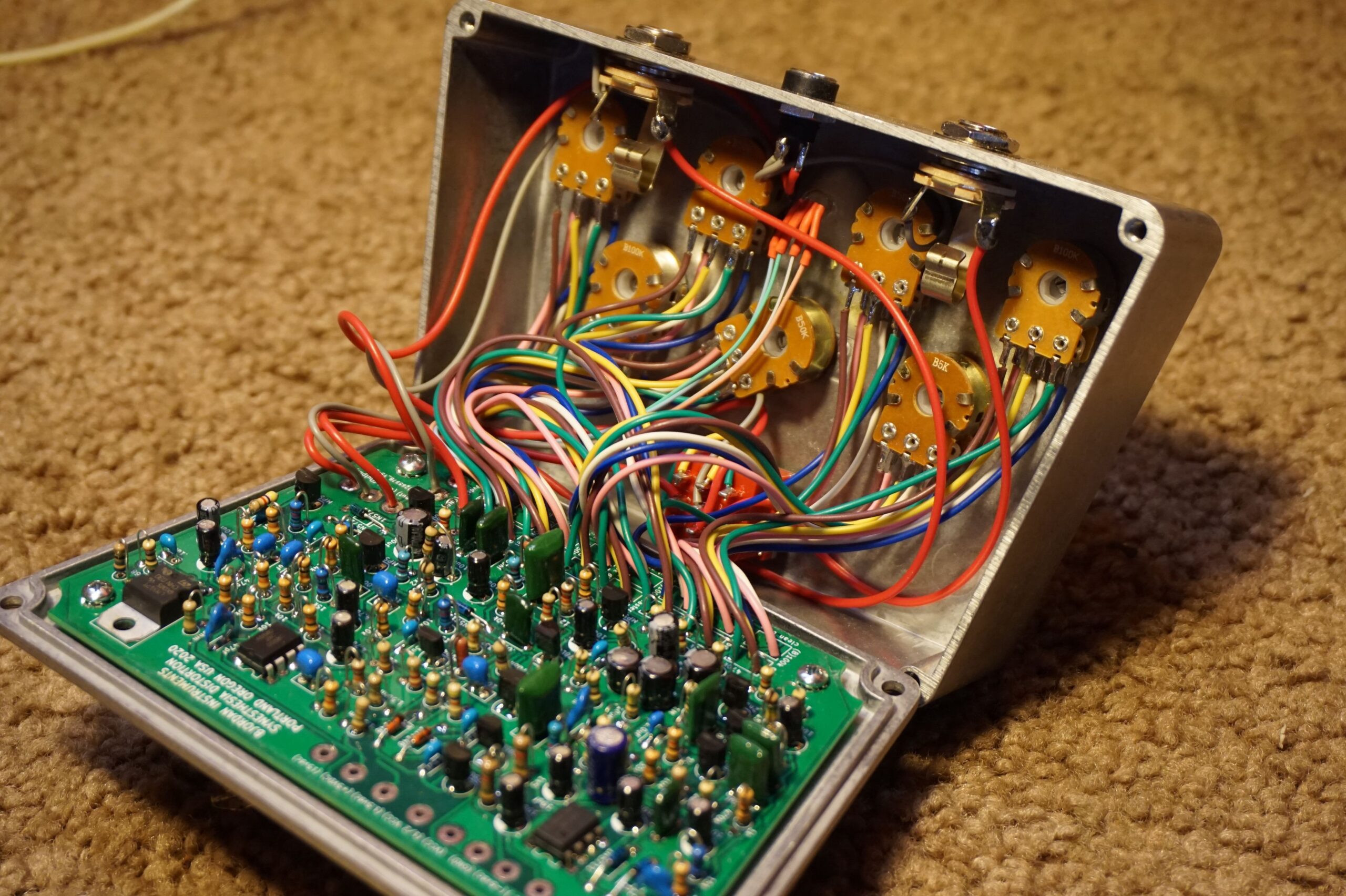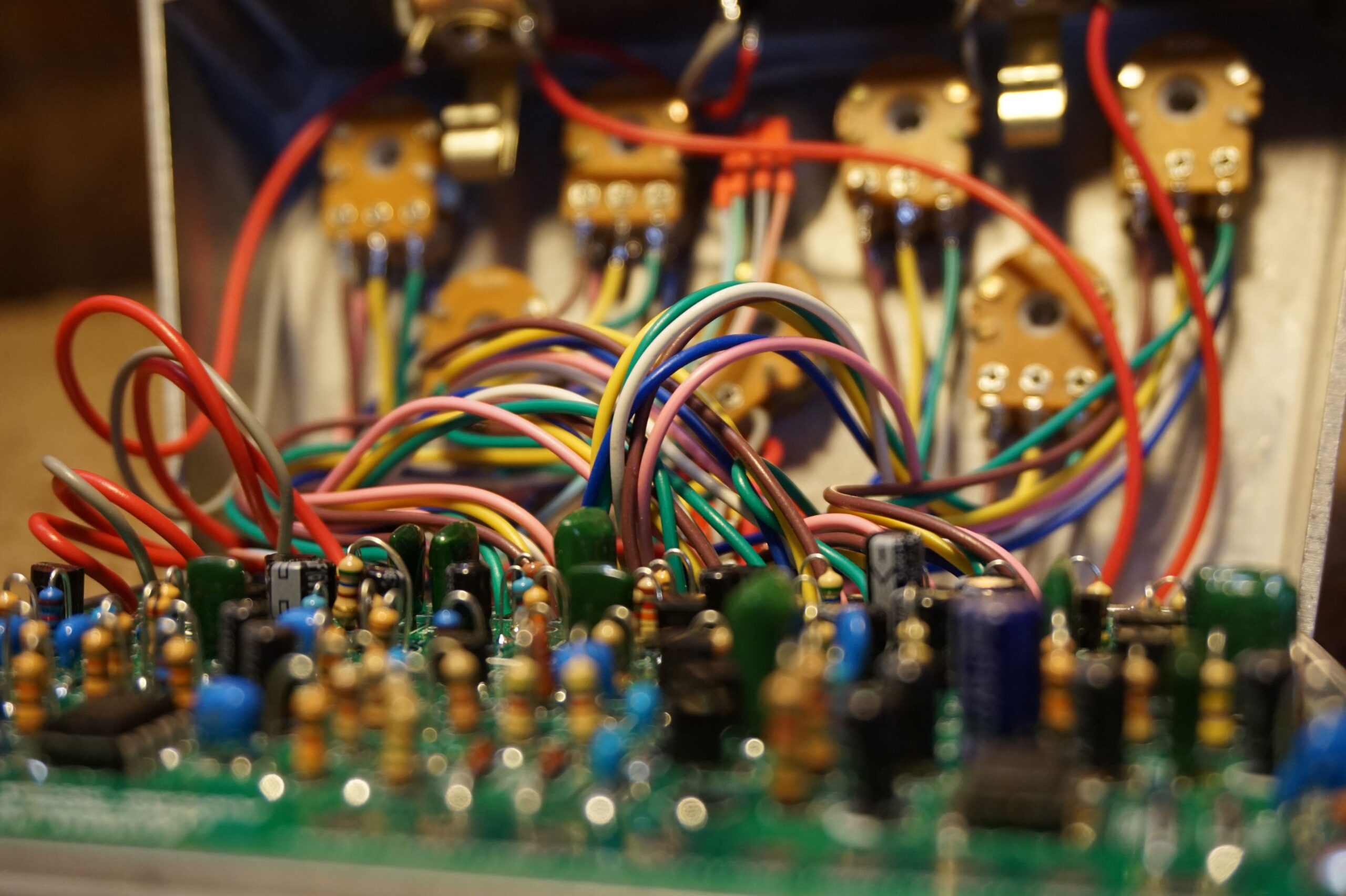SYNESTHESIA DISTORTION PEDAL
Made with an eye-catching tapered-edge aluminum enclosure, with laser-engraved logo and lettering, the Lil Trees Synesthesia Distortion is in a class of its own: handmade in Portland, Oregon using the highest-quality components available, and designed with sturdy construction, spacious component placement, and a chassis-mounted assembly, every element of this instrument is ruggedly built to provide a lifetime of uninterrupted use.
FEATURES:
The Synesthesia Distortion pedal is many things, the first of these things is a clean booster/buffer amplifier. In addition to the buffered clean booster, the pedal also has a transistorized hard clipping fuzz circuit. That is correct, the Synesthesia Distortion is two pedals in one. An even more useful feature is the ability to mix the clean and dirty levels together using the pedals internal mixer circuit. You can further perfect the sound you have created with an EQ section. Once your EQ’d and mixed, you can set the overall output volume with the master volume stage. Each component included in the assembly of the unit plays a critical and essential role in helping the user to effortlessly create new tones and further their sound exploration experience.
Mixing Clean and Distorted Signals
The pedal is equipped with an op-amp-based audio signal mixer/amplifier, the area in the circuit where the two potential signals can be combined. Instead of the more common “single-supply voltage” design, the Synesthesia is wired with a regulated bipolar power supply circuit for the mixer/amplifier, allowing for a substantially greater amount of headroom, preventing “squashing” of the input signal, and giving the user a third area of amplification.
With this innovative design, you can now truly amplify the mixed signals, letting you recover any volume loss sustained when mixing clean and dirty tones together. Additionally, this third amplification stage also allows the user to add intensity to the fuzz channel by further amplifying the second- and third-order harmonics, creating the classic and sought-after “metallic, crashing air” fuzz tone.
Blending Tone Color
The Synesthesia Distortion uses an intuitive light-based control system, which allows the user to visually program sonic tones based on a color reference: the pedal is equipped with a red-blue-green LED that senses knob adjustments, changing its hue across the color spectrum. This feature enables quick, on-the-fly tweaking of the sound, as well as a wide palette for tonal experimentation.
THE SOUND
All preamp sections of the Synesthesia Distortion are transistorized sub circuits, leading their way into an op-amp based mixer/amplifier circuit, allowing for your input signal to be lifted with the least amount of signal noise possible—this low-operation noise goal was maintained throughout the design of each sub-circuit power supply as well.
EQ
The Synesthesia Distortion pedal is also designed with a two-band active equalization control. This sub-circuit operates on the full supply voltage and has its own dedicated power filtration circuit. This EQ control can add +6db of gain to the signal using the clean and fuzz sub-circuits, providing a multitude of applications in both onstage and studio environments.
Low-Noise Circuit Design
With the fuzz circuit operating at a lower voltage than the rest of the pedal, minimal noise is created, which would otherwise be amplified later in the signal chain. This noise-reducing measure is also taken with the clean buffer amplifier circuit.
Power Stability
Additionally, to ensure that there is never any bias-shift for the clean buffer section, the input signal is always biased to exactly half of the input voltage, allowing for a full-swing input waveform to be amplified, without the possibility of hitting either the positive or low potential rails during operation.
This is especially useful if there is a change in the power supply—as happens when multiple pedals are powered from a single wall supply, for example—which helps to ensure you have clean and accurate amplification, even if conditions are not perfect outside of the pedal.


